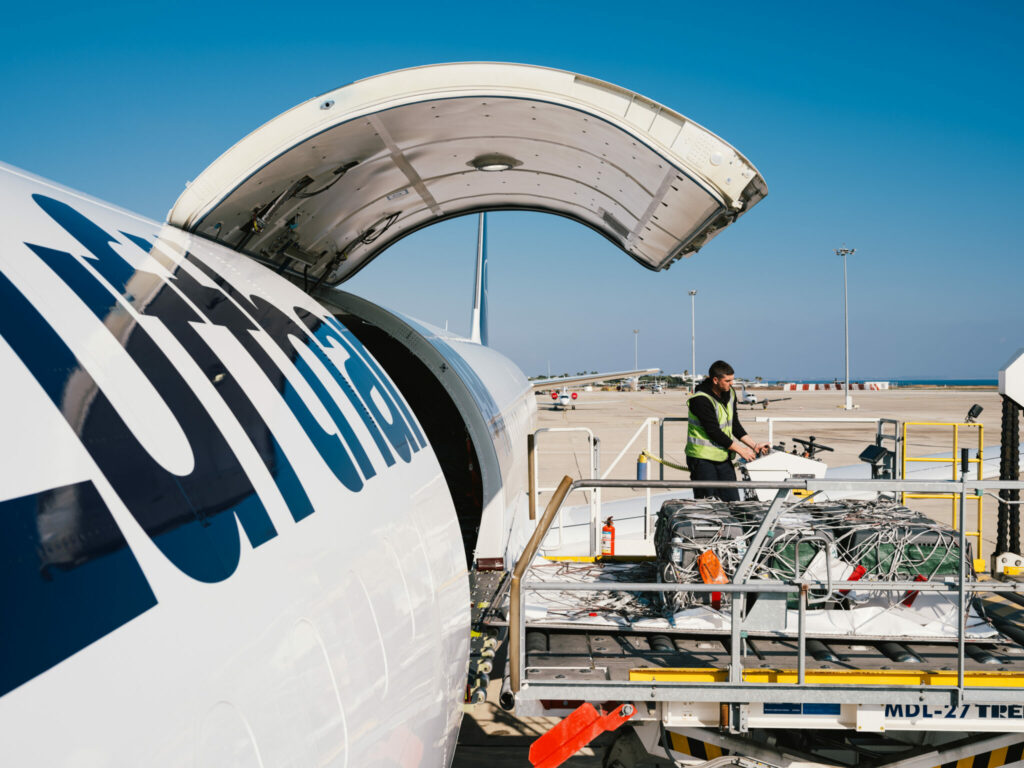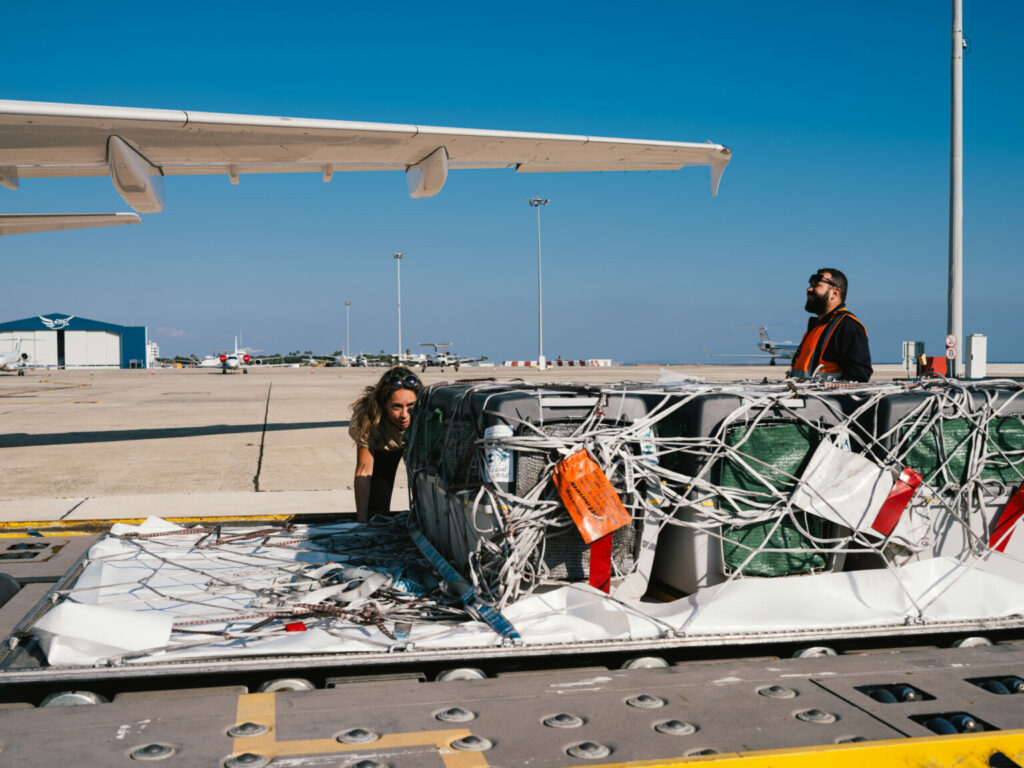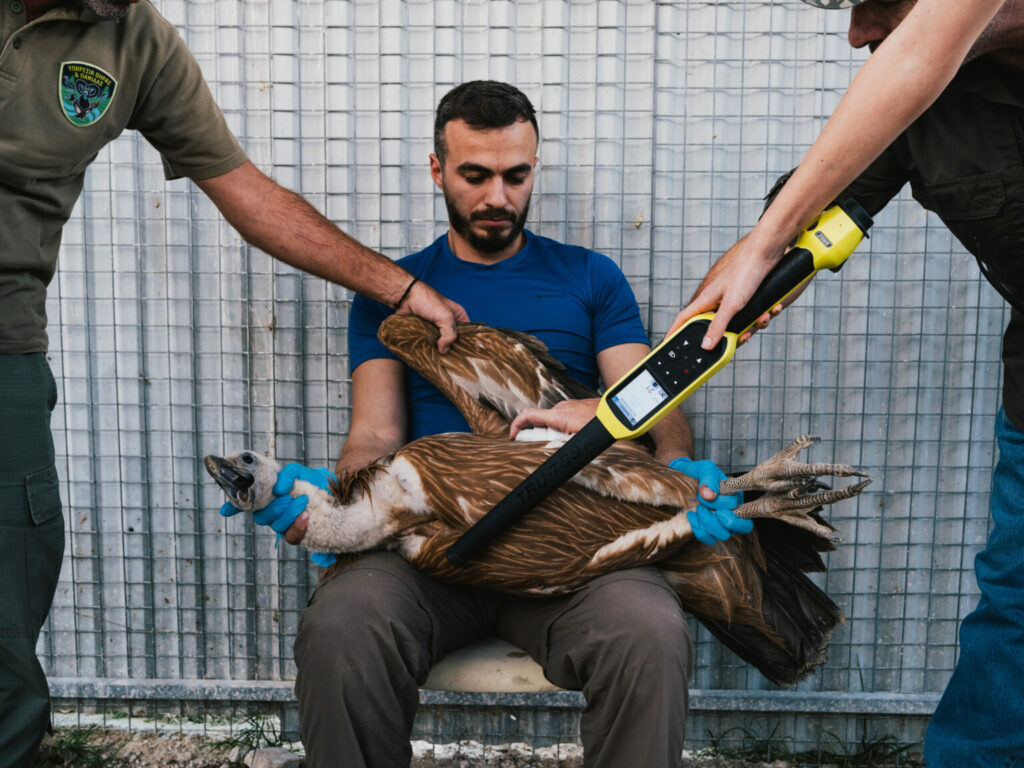Filenews 19 December 2023
Last week, another 15 vultures arrived by plane from Spain as part of the "LIFE with Vultures" project to save the endangered Griffon Vulture fulvus. In total, 44 vultures have been transferred to Cyprus under the programme, 29 of which have already been released into the Cypriot countryside.
The 15 vultures were transferred to a special acclimatization cage of the Game and Fauna Service in the Limassol district where they will remain for at least 6 months. As with the previous vultures released, the birds will be fitted with satellite transmitters to monitor their movements, as well as for early rescue intervention in case a bird encounters a problem.

As mentioned above, vultures were imported from Spain, as the country hosts 90-95% of Europe's vultures, with a Griffon Vulture population of 30,000 pairs. The birds selected for transport to Cyprus were juveniles hatched in Spain that ended up in the AMUS wildlife hospital due to an injury or weakness. After receiving care and fully recovering, they were selected for the Cyprus population enhancement program with the support of the Vulture Conservation Foundation, who organized the process of transporting the birds and shared their expertise on importing birds to enhance the local population.
The import of birds from other areas in order to strengthen and maintain populations of endangered species is a widespread practice around the world. Due to the extremely small number of vultures that Cyprus now has, the slow reproduction rate of the species and the frequent poisoning by follies, the Griffon Vulture population in Cyprus cannot recover without human intervention. Indeed, based on a study conducted by the Vulture Conservation Foundation, it is predicted that the Cypriot population will disappear within the next 15 years, if the frequency of poisonings remains at the high levels it is today (4 poisoning incidents every 5 years). But if through conservation actions, such as tackling the use of poison baits, which is the most serious threat to the species, we manage to reduce the frequency of poisonings by 90% (i.e. one incident every 10 years) and if at the same time we strengthen the population by introducing birds, we will achieve the recovery of the population within the next 25 years.

Of the 29 Spanish birds released to date, the loss of 4 birds has been recorded. Two due to the power grid (one due to collision with overhead power lines and one due to electric shock), one due to poisoning and one due to disorientation.
Already in the framework of the "LIFE with Vultures" project, actions are being implemented to address the causes of mortality in the population. For mortality due to the electricity grid, the project team is in contact with EAC for the marking of overhead lines with a high risk of impact, as well as the insulation of pillars to reduce the risk of electric shock. In order to address the threat of poisoning, actions such as the operation of two teams of poison bait detection dogs that tirelessly patrol the Cypriot countryside. These teams play an important and critical role in detecting and preventing poisoning incidents in the countryside, contributing to the conservation not only of the Griffon Vulture, but also of other wildlife vulnerable to poisoning, as well as to the protection of companion animals such as dogs and cats. Also, thanks to the cooperation of all competent services and bodies, last December and for the first time in Cyprus a specific person was linked to the illegal placement of poisoned bait and was imposed by the Game and Fauna Service and the Police an extrajudicial fine of 21,000 euros for the offence of killing wild endangered birds with the use of poison and the offence of intentionally killing and/or capturing a protected wild bird.

The LIFE with Vultures project team would like to thank all those who contributed to the introduction of the birds:
• The Government of Spain and the Local Government of Extremadura for providing the birds.
• The AMUS Wildlife Hospital for the care and temporary accommodation of the birds before their departure.
• Hermes Airports for providing access to the airport premises upon arrival of birds.
• Lufthansa for the transport of birds.
• The EU and the LIFE programme and the Tasso Leventis Conservation Foundation which co-fund this effort.
• All stakeholders who support this effort.
